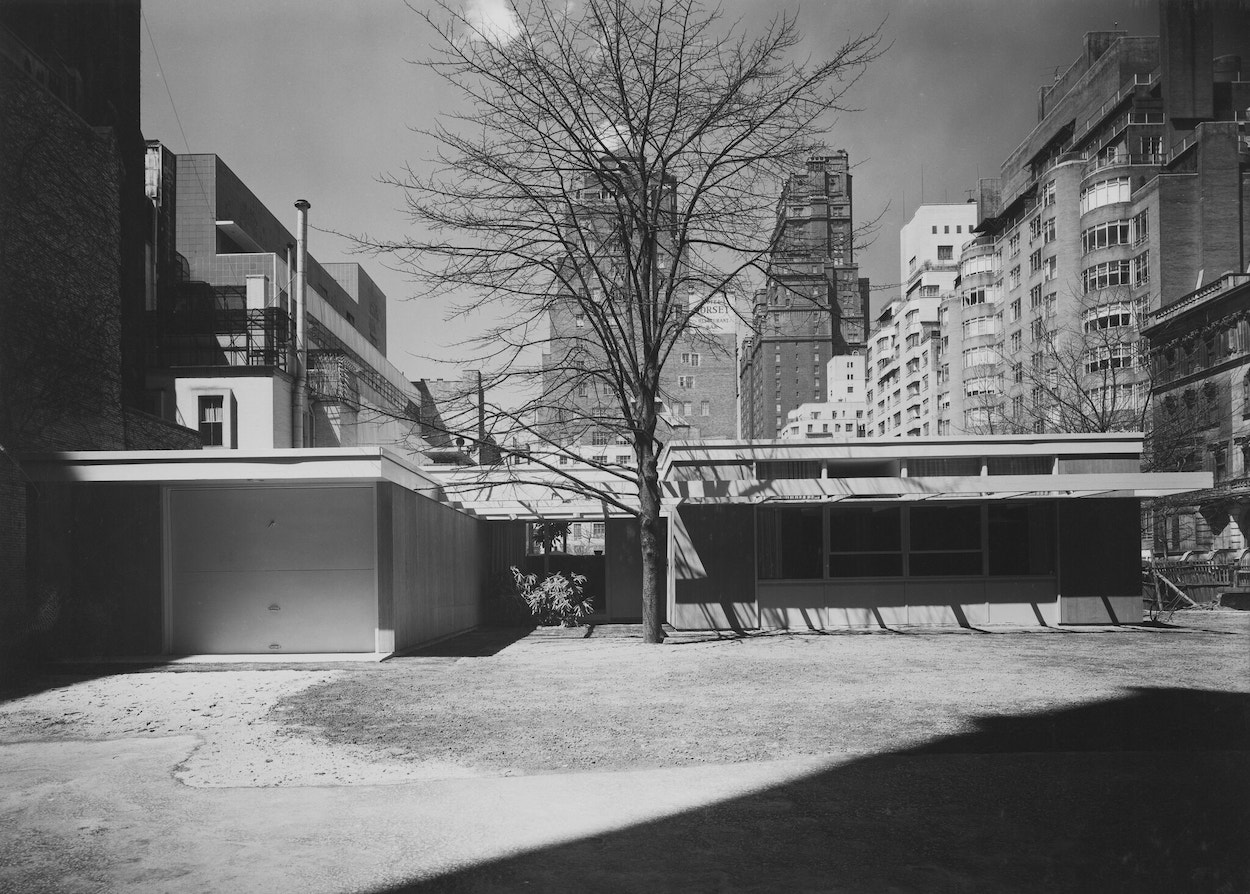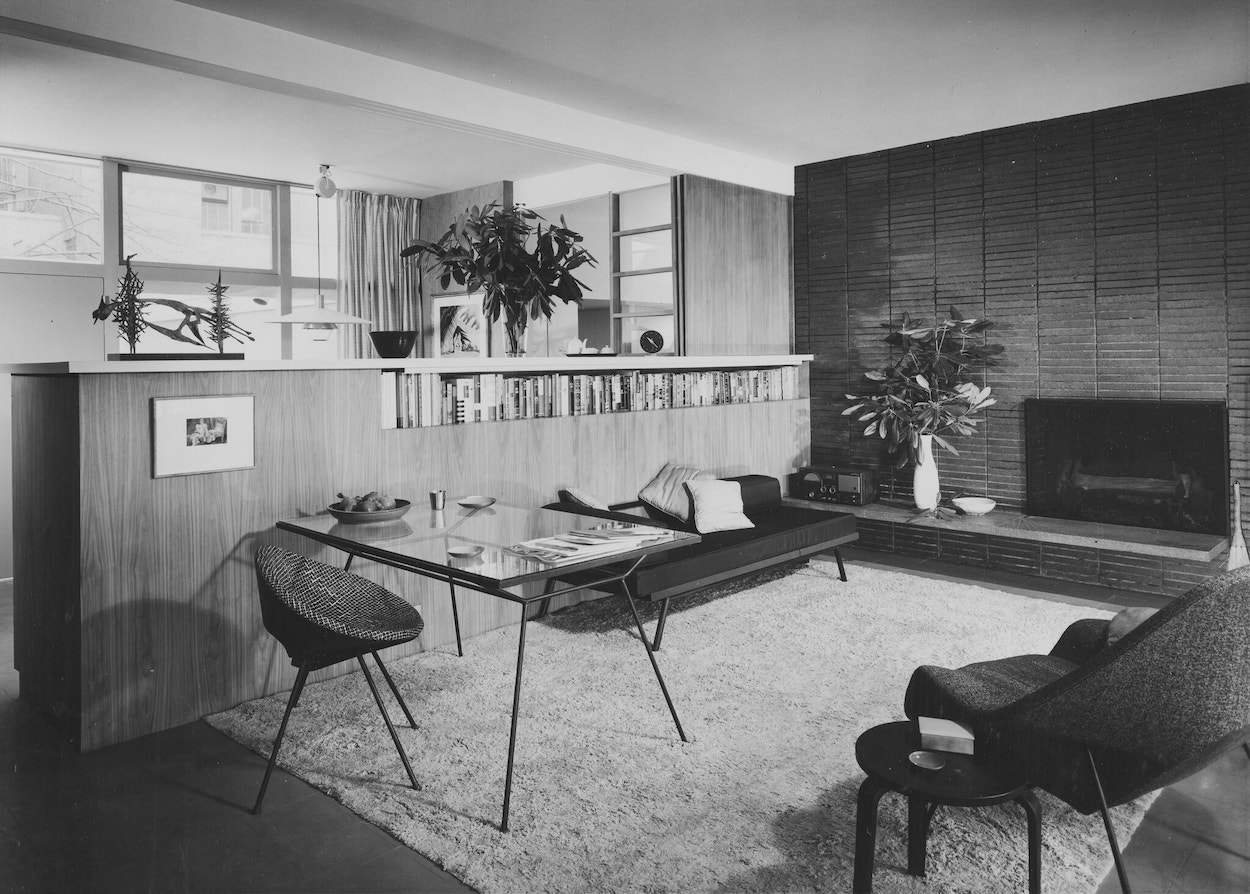Gregory Ain may not be a household name outside of Los Angeles, where he brought elements of modern architecture to low-cost housing, but he masterminded New York’s most famous house for a few months in 1950. Situated atop the Museum of Modern Art, the glass-walled dwelling was meant to inspire budget-minded creativity for then-new residential subdivisions. According to a museum brochure, the two-bedroom house’s movable wall system “conveys an illusion of spaciousness” while expansive windows offered unencumbered views; furnishings were practical, mass-produced, and unfussy, many designed by Charles and Ray Eames.
Though the home wowed visitors, it fell into obscurity once its stint at the museum ended. It essentially disappeared until George Smart, the architectural historian who founded North Carolina nonprofit USModernist, pored through MoMA’s archives and discovered the structure was standing in Croton-on-Hudson, New York. (The house’s original 51.5-inch model was rediscovered in 2017 and gifted to the museum.) Its current owner, Mary Kelly, a longtime fan of Modernist homes, purchased it with her husband in 1979. And in Kelly, the home has perhaps found its ideal inhabitant—one who appreciates its innovative design features and is making deft use of the various components Ain envisioned.
Perhaps this revelation will shed more light on Ain’s work, especially how he proved that great design and socially conscious housing can overlap. Until then, we encourage you to read Eve M. Kahn’s full journey into the house’s past, present, and future: “They want to tour this place,” Kelly tells her about the home’s occasional visitors. “They know it’s different. They’re always curious. But you’d be surprised how people change things.”


